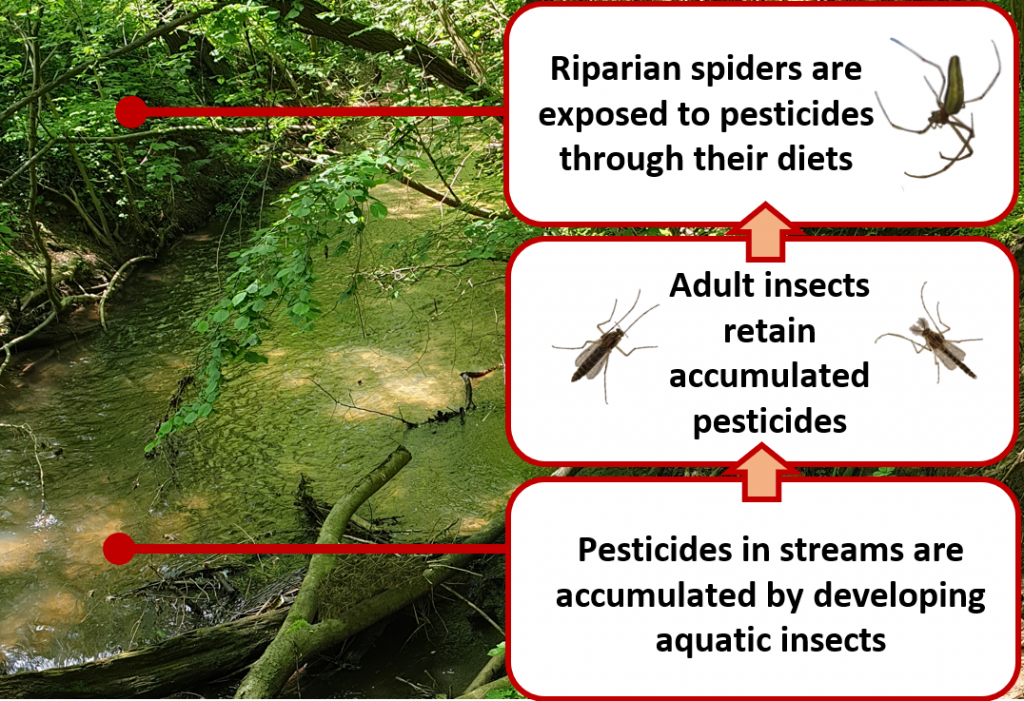In our latest blogpost, Alexis P. Roodt talks about his research on how riparian spiders are exposed to water-borne pesticides by feeding on emerging aquatic insects.
Aquatic insects accumulate pesticides
Freshwater ecosystems which are impacted by agriculture are often contaminated with low concentrations of many pesticides, including fungicides, herbicides, and insecticides. In previous laboratory studies, it was shown that insects that develop in the aquatic environment can accumulate some pesticides in their bodies (Fig. 1). These insects then emerge as adults to complete their life cycles, transporting retained pesticides with them. These studies made use of a small number of selected pesticides at relatively high concentrations compared to what is typically found in freshwater environments. Among the tested substances, the neonicotinoid insecticide, thiacloprid, was even retained by adult insects that had only been exposed for 24 hours during their development. The aim of the latest study was therefore to find out if insects emerging from agriculturally impacted streams transported a wider range of pesticides to land when exposed to very low concentrations. Additionally, we wanted to find out if this resulted in the dietary exposure of spiders that caught and ate these insects.
Investigation and findings
To investigate this, we collected samples from ten stream sites impacted by agriculture in Southwest Germany. This included samples to investigate the contamination of the aquatic environment, such as water and sediment, as well as adult emerging insects and web-building spiders. The samples were then analyzed for 82 currently used pesticides by liquid chromatography combined with mass spectrometry. The stream sites were found to be contaminated with a large number of pesticides with up to 36 in the water samples. The highest concentrations were found for fungicides and the lowest for insecticides, which reflected their usage in the surrounding agriculture. Of these pesticides, 27 were found in the adult emerging insects. The highest concentrations in the insects were, however, found for several neonicotinoid insecticides. This pattern was also consistent in the spiders which contained high concentrations of up to four different neonicotinoid insecticides.
Conclusion
Our results, therefore, confirmed that emerging insects transport a wide range of pesticides into terrestrial food webs and this occurs even when concentrations in the aquatic environment are very low. Most notably, this was the case for the neonicotinoid insecticides, which were measured in the stream water at concentrations lower than what has been reported for in contaminated surface waters globally. The selective accumulation and transport of these insecticides into the riparian food web may have negative implications for higher trophic levels, such as birds and bats which feed on emerging insects and spiders (Fig. 1).
The paper titled ‘Aquatic-terrestrial transfer of neonicotinoid insecticides in riparian food webs’ was authored by Alexis P. Roodt, Maike Huszarik, Martin H. Entling and Ralf Schulz and published in Journal of Hazardous Materials.

